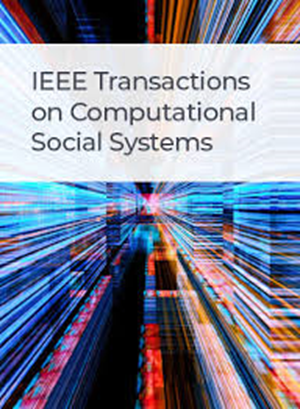查找组件关系:基于深度学习的异常检测解释器
IF 4.5
2区 计算机科学
Q1 COMPUTER SCIENCE, CYBERNETICS
IEEE Transactions on Computational Social Systems
Pub Date : 2024-02-22
DOI:10.1109/TCSS.2024.3360435
引用次数: 0
摘要
虽然学术界对基于深度学习(DL)的模型的可解释性进行了广泛探索,但将现有解释方法应用于工业控制系统(ICS)中的异常检测却面临挑战,主要原因有两个。首先,ICS 的安全专家有不同的解释重点,强调稳定性和可读性。其次,ICS 中有各种类型的设备组件,传感器和执行器之间的潜在交互作用尚待探索。为了应对上述挑战,我们提出了 DeepINT--一种用于 ICS 异常检测的解释器。在 DeepINT 中,我们采用了一种搜索优化算法来寻找参考点,并通过反向传播梯度来捕捉特征的重要性,从而提高解释性能和可靠性。此外,我们还构建了基于有限差分的交互检测,测试不同设备组件之间的交互,以解决综合布线系统中执行器不易解释的问题,同时提高解释结果的全面性和准确性。在两个真实水处理数据集(安全水处理 (SWaT) 和配水 (WADI))的综合实验中,与六种最先进的基线方法相比,DeepINT 显示出卓越的解释性能,尤其是在 SWaT 数据集上,解释准确率提高了 60%。此外,我们的方法还大大提高了交互检测的效率,在解释性能和时间效率之间取得了平衡。本文章由计算机程序翻译,如有差异,请以英文原文为准。
Finding Component Relationships: A Deep-Learning-Based Anomaly Detection Interpreter
While the interpretability of deep learning (DL)-based models has been extensively explored in academia, applying existing interpretation methods to anomaly detection in industrial control systems (ICSs) poses challenges for two primary reasons. First, security experts in ICS have distinct interpretive priorities, emphasizing the need for stability and readability. Second, there are various types of device components in ICS, and the potential interactions between sensors and actuators are yet to be explored. To tackle the above challenges, we propose DeepINT, an interpreter for anomaly detection in ICS. In DeepINT, we adopt a search optimization algorithm to find the reference and capture feature importance by the backpropagation gradient to improve interpretation performance and reliability. In addition, we construct a finite difference-based interaction detection, which tests the interaction of different device components, in order to address the problem that actuators in ICS are not easily interpreted, meanwhile improving the comprehensiveness and accuracy of the interpretation results. In comprehensive experiments on two real water treatment datasets [secure water treatment (SWaT) and water distribution (WADI)], DeepINT shows excellent interpretation performance compared to the six state-of-the-art baseline methods, especially on the SWaT dataset, with a 60% improvement in interpretation accuracy. In addition, our method significantly improves the efficiency of interaction detection, which balances interpretation performance and time efficiency.
求助全文
通过发布文献求助,成功后即可免费获取论文全文。
去求助
来源期刊

IEEE Transactions on Computational Social Systems
Social Sciences-Social Sciences (miscellaneous)
CiteScore
10.00
自引率
20.00%
发文量
316
期刊介绍:
IEEE Transactions on Computational Social Systems focuses on such topics as modeling, simulation, analysis and understanding of social systems from the quantitative and/or computational perspective. "Systems" include man-man, man-machine and machine-machine organizations and adversarial situations as well as social media structures and their dynamics. More specifically, the proposed transactions publishes articles on modeling the dynamics of social systems, methodologies for incorporating and representing socio-cultural and behavioral aspects in computational modeling, analysis of social system behavior and structure, and paradigms for social systems modeling and simulation. The journal also features articles on social network dynamics, social intelligence and cognition, social systems design and architectures, socio-cultural modeling and representation, and computational behavior modeling, and their applications.
 求助内容:
求助内容: 应助结果提醒方式:
应助结果提醒方式:


